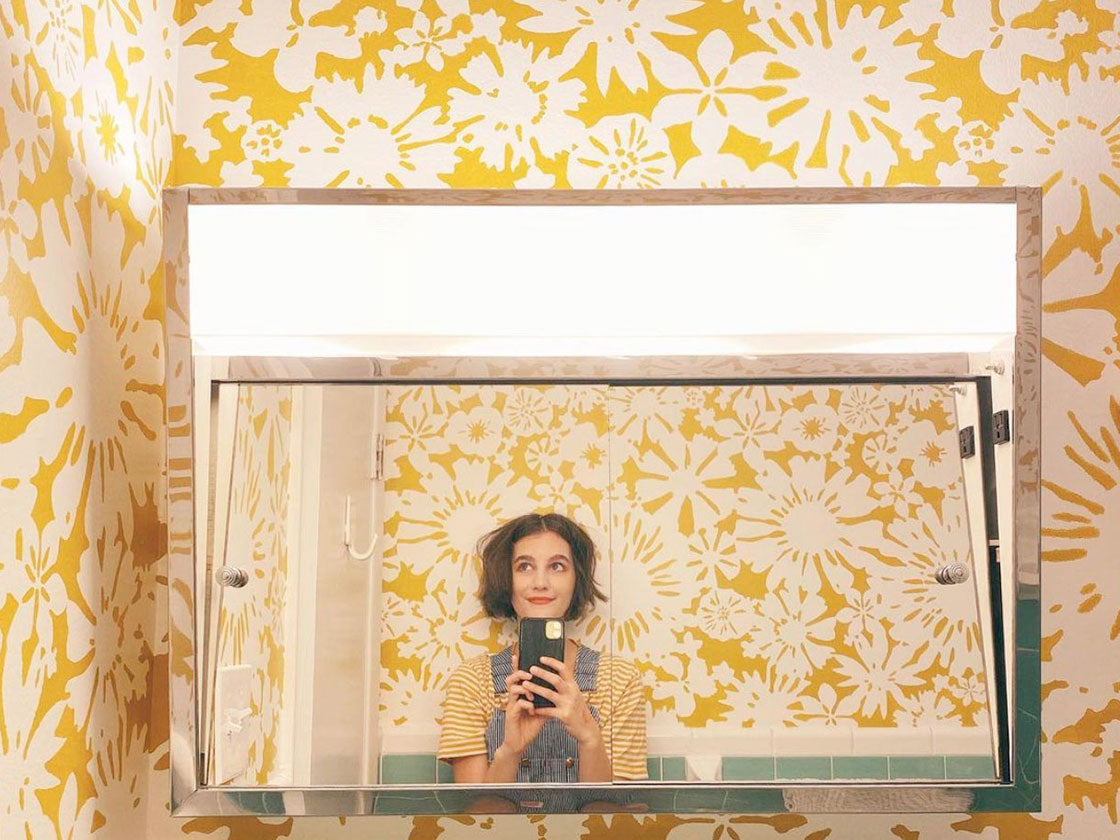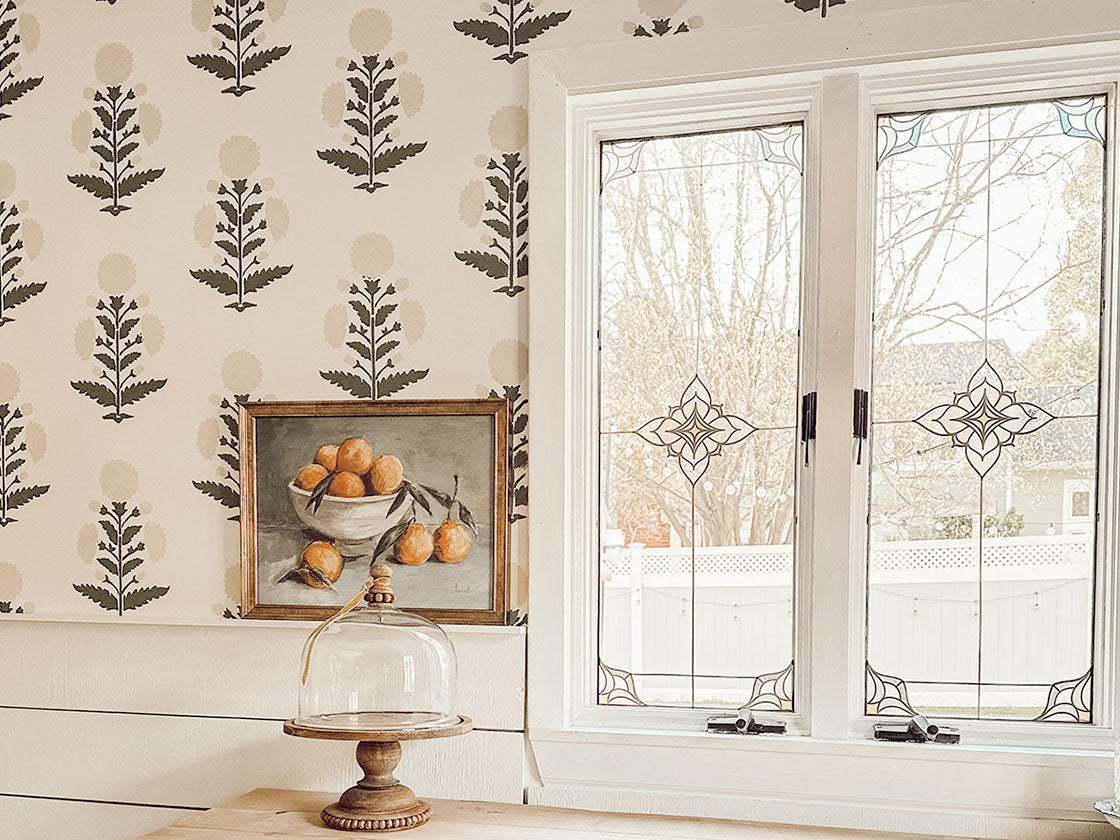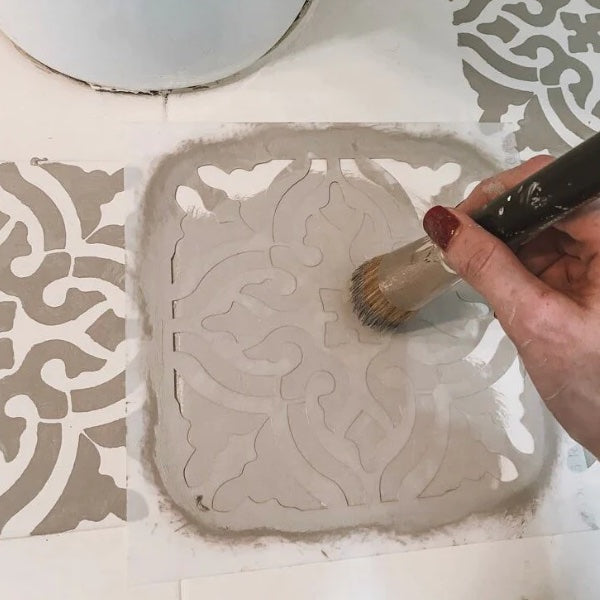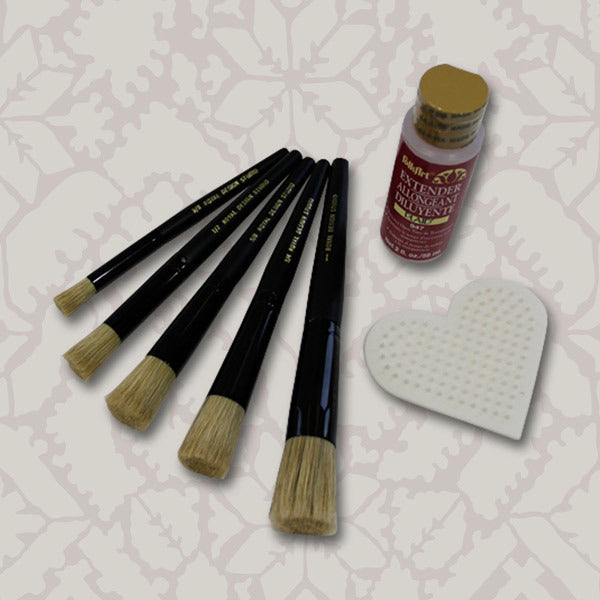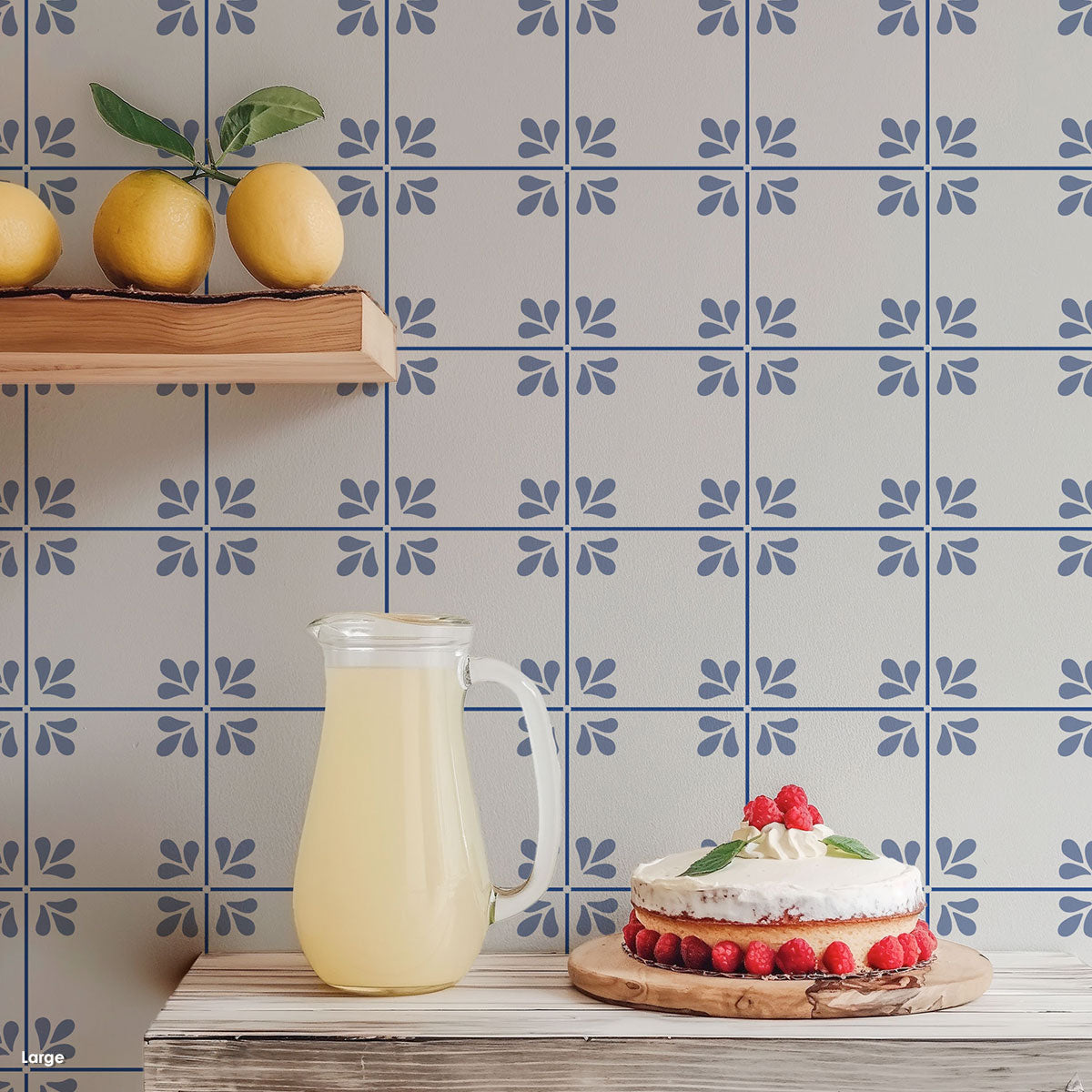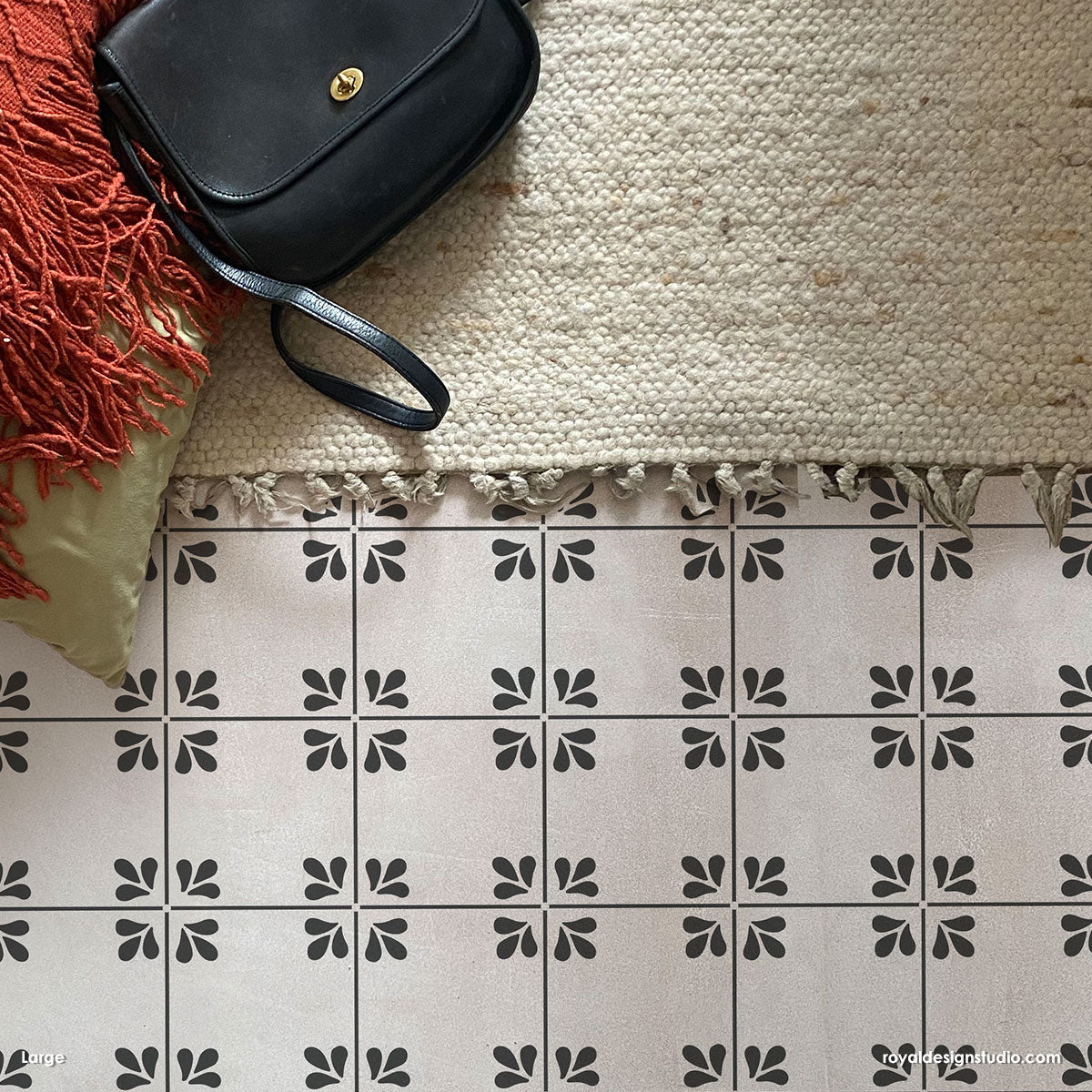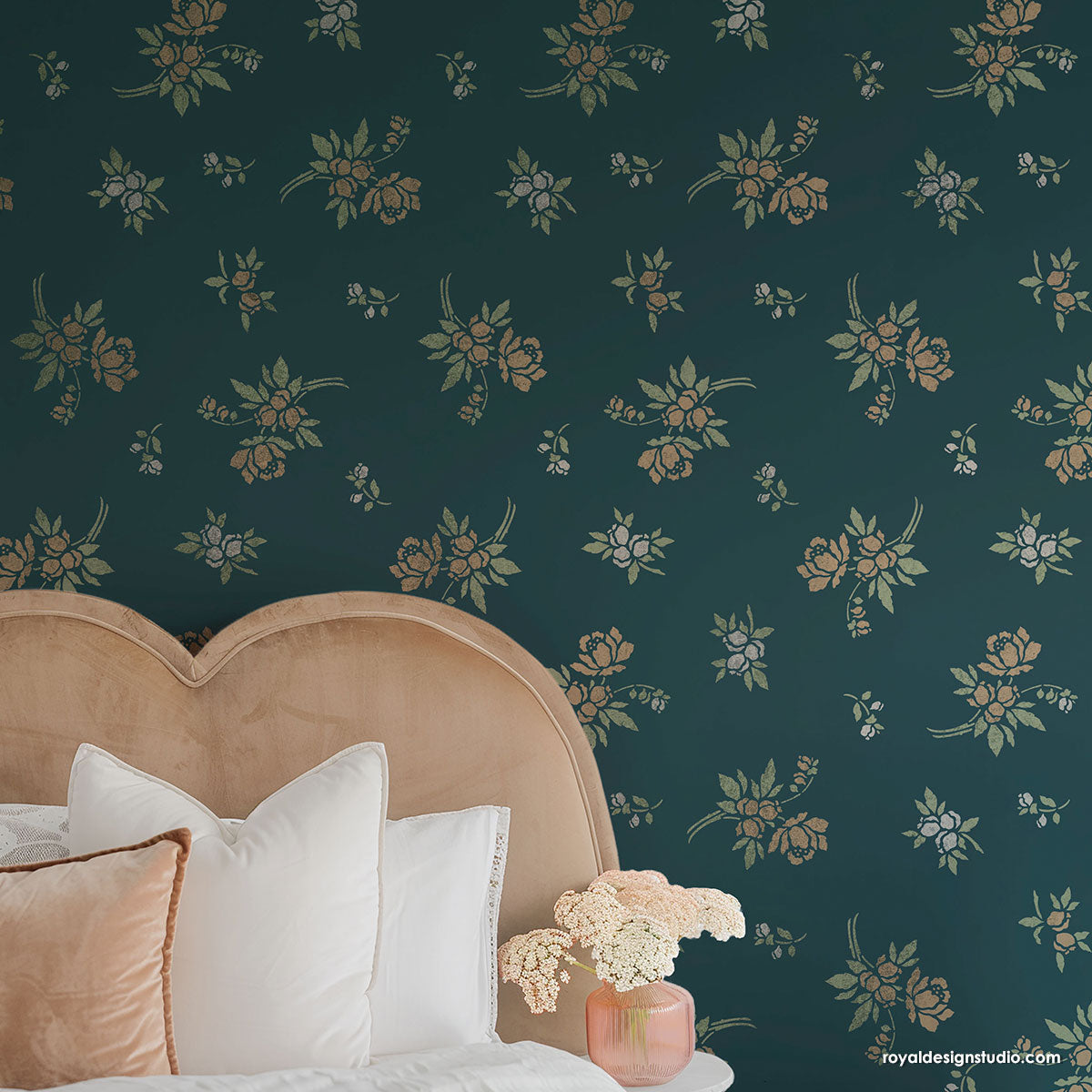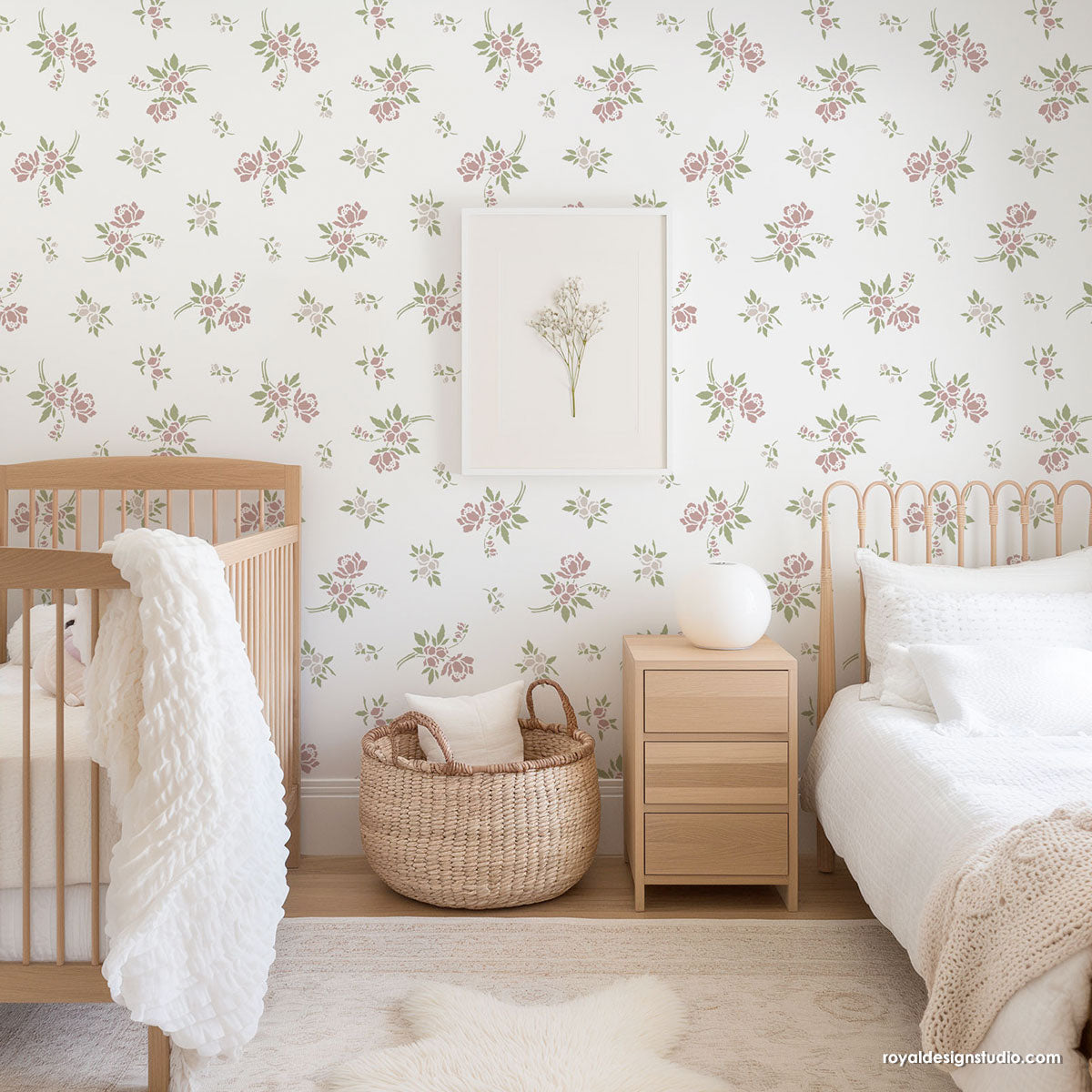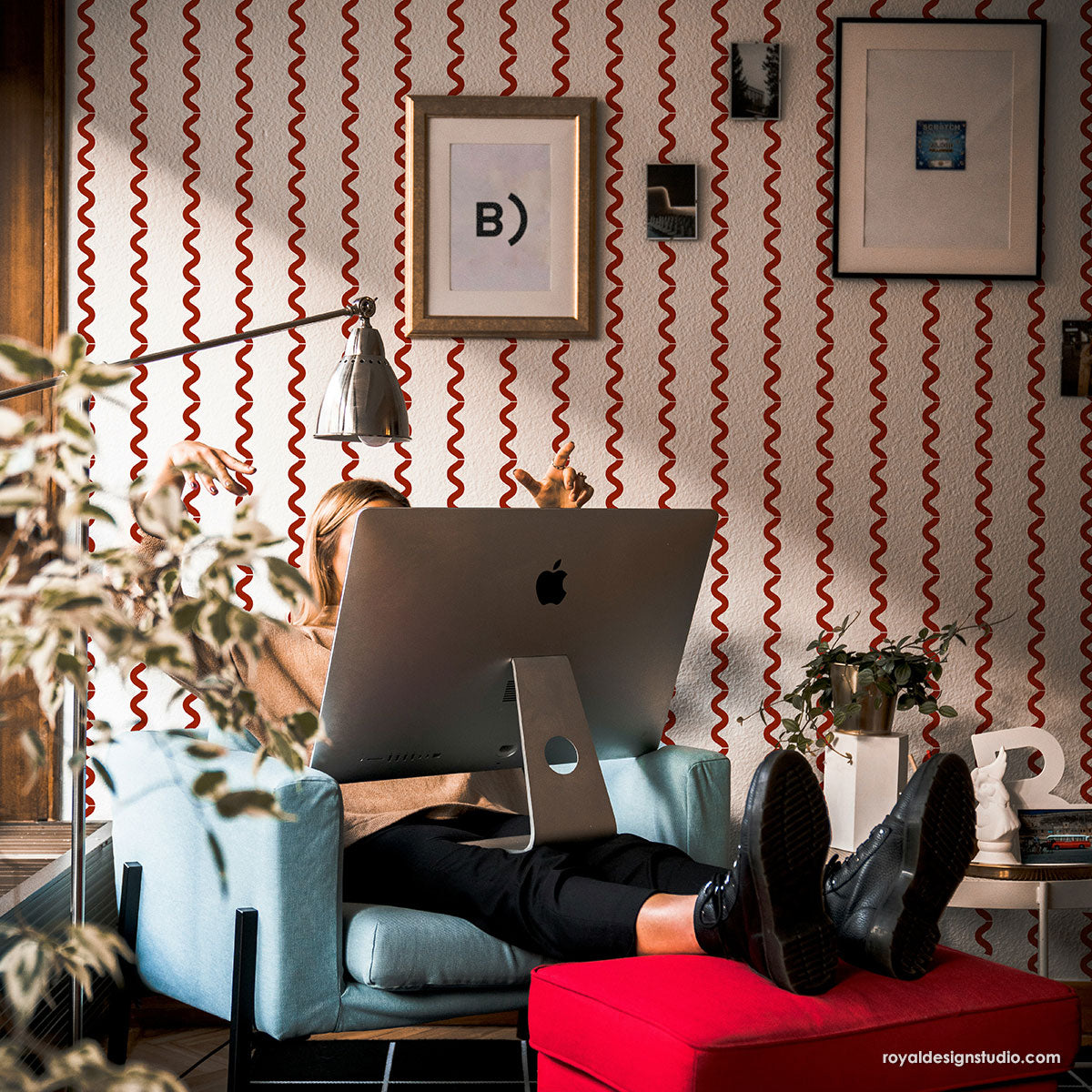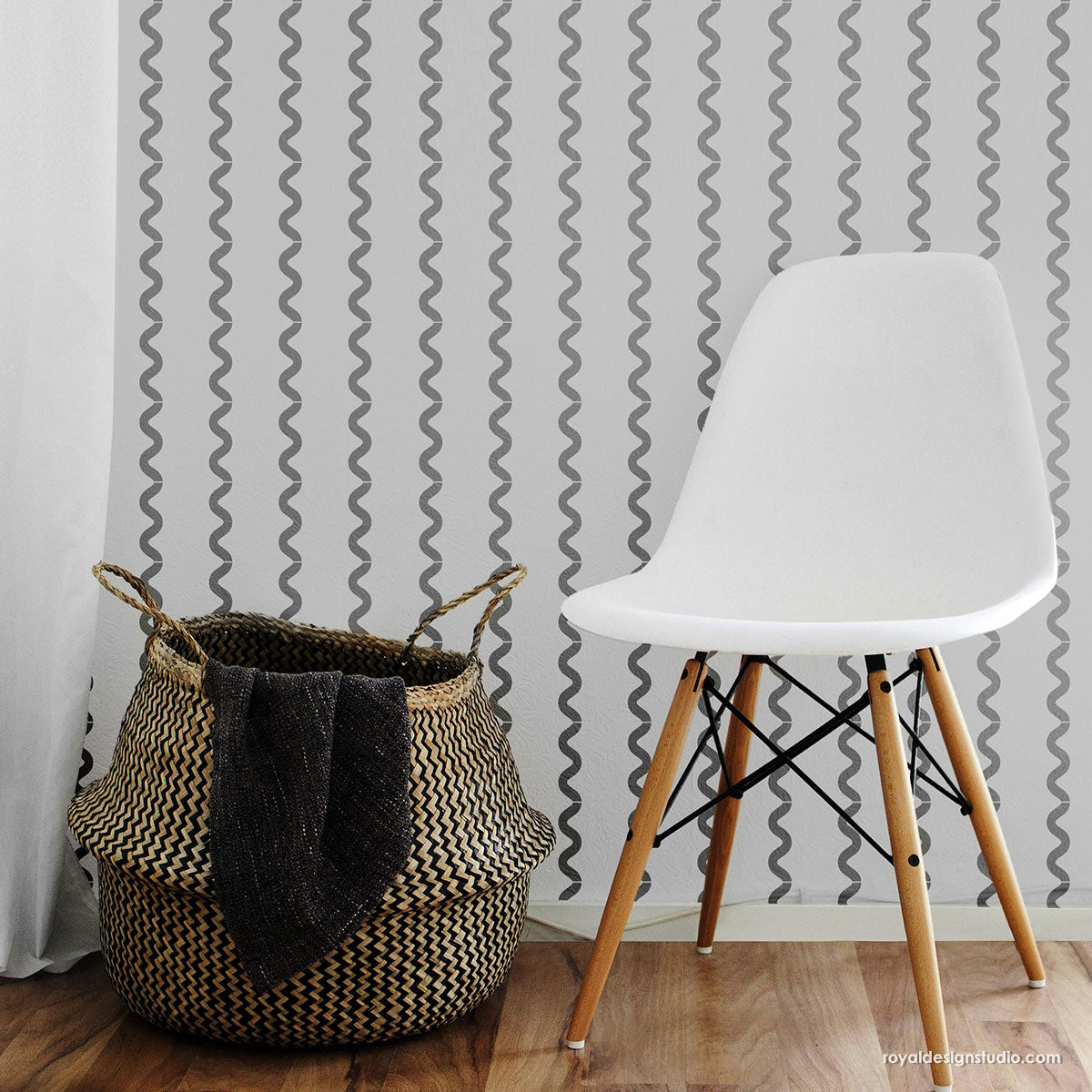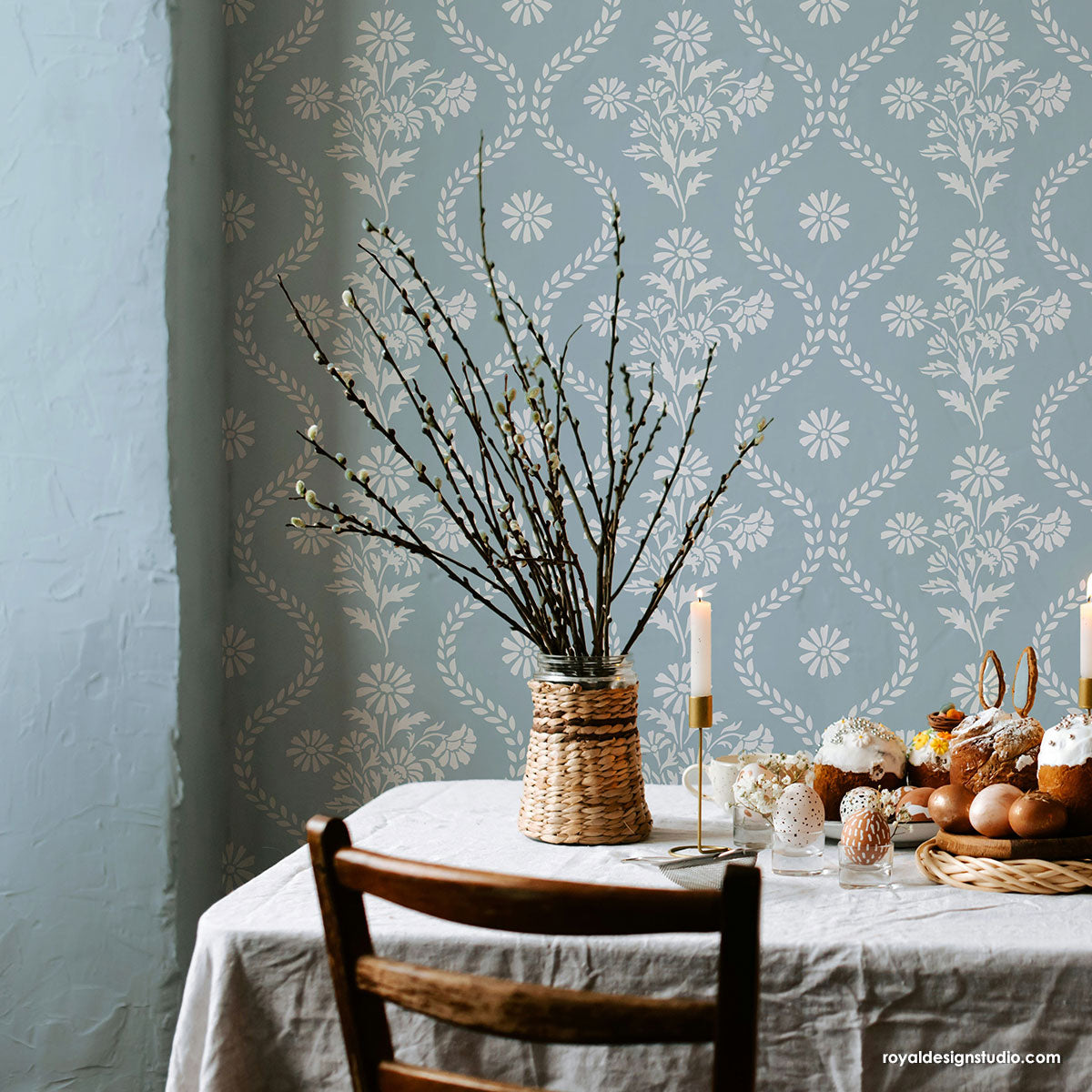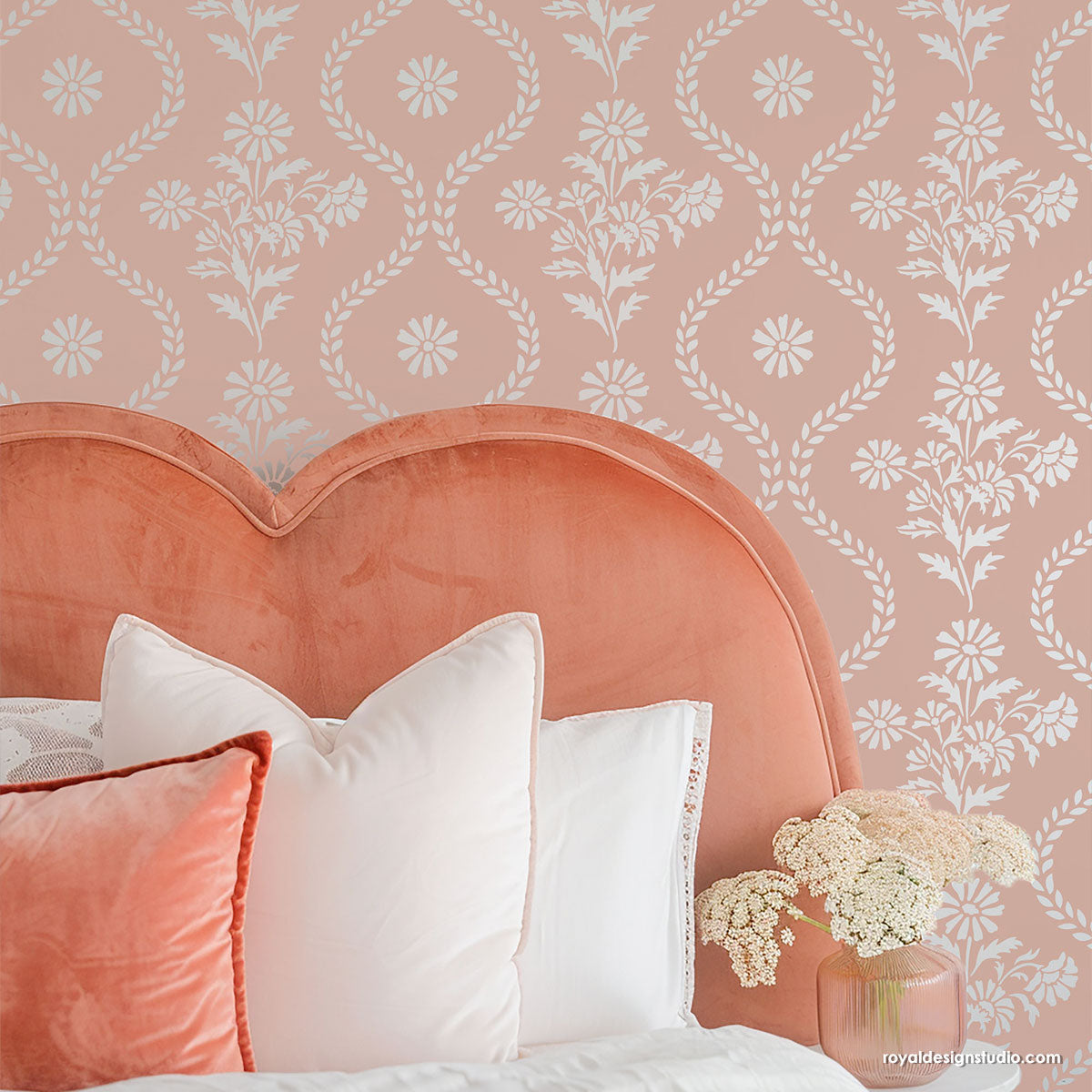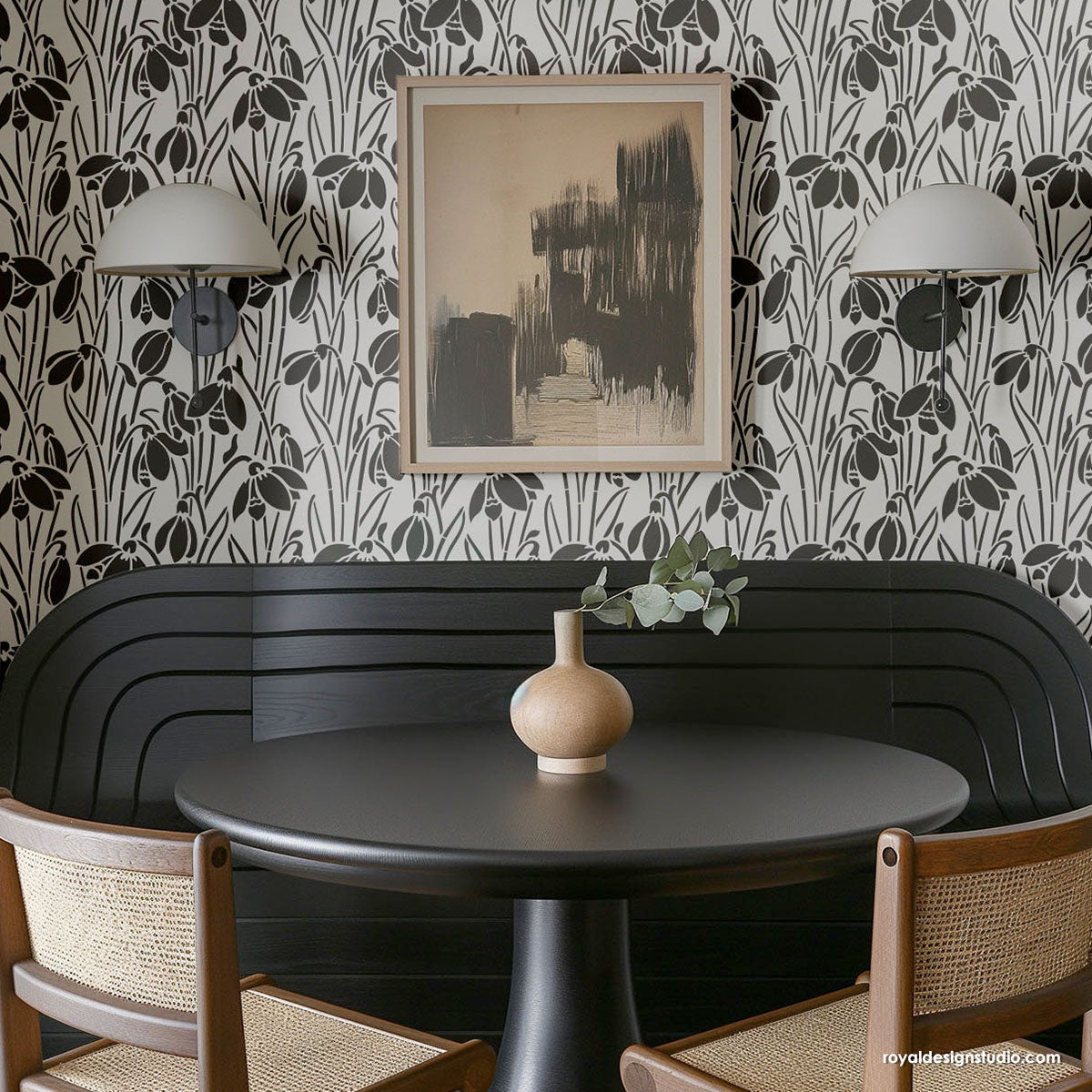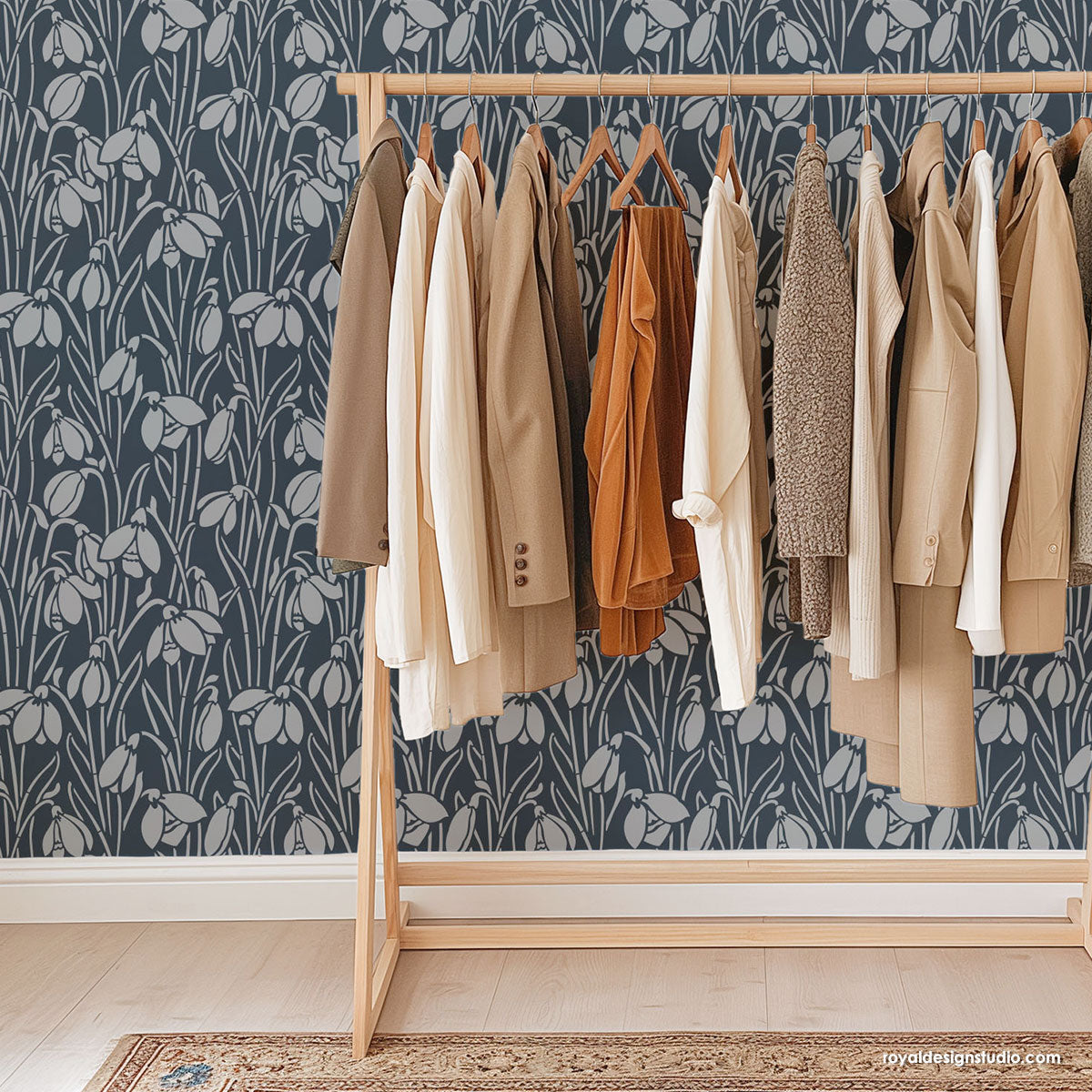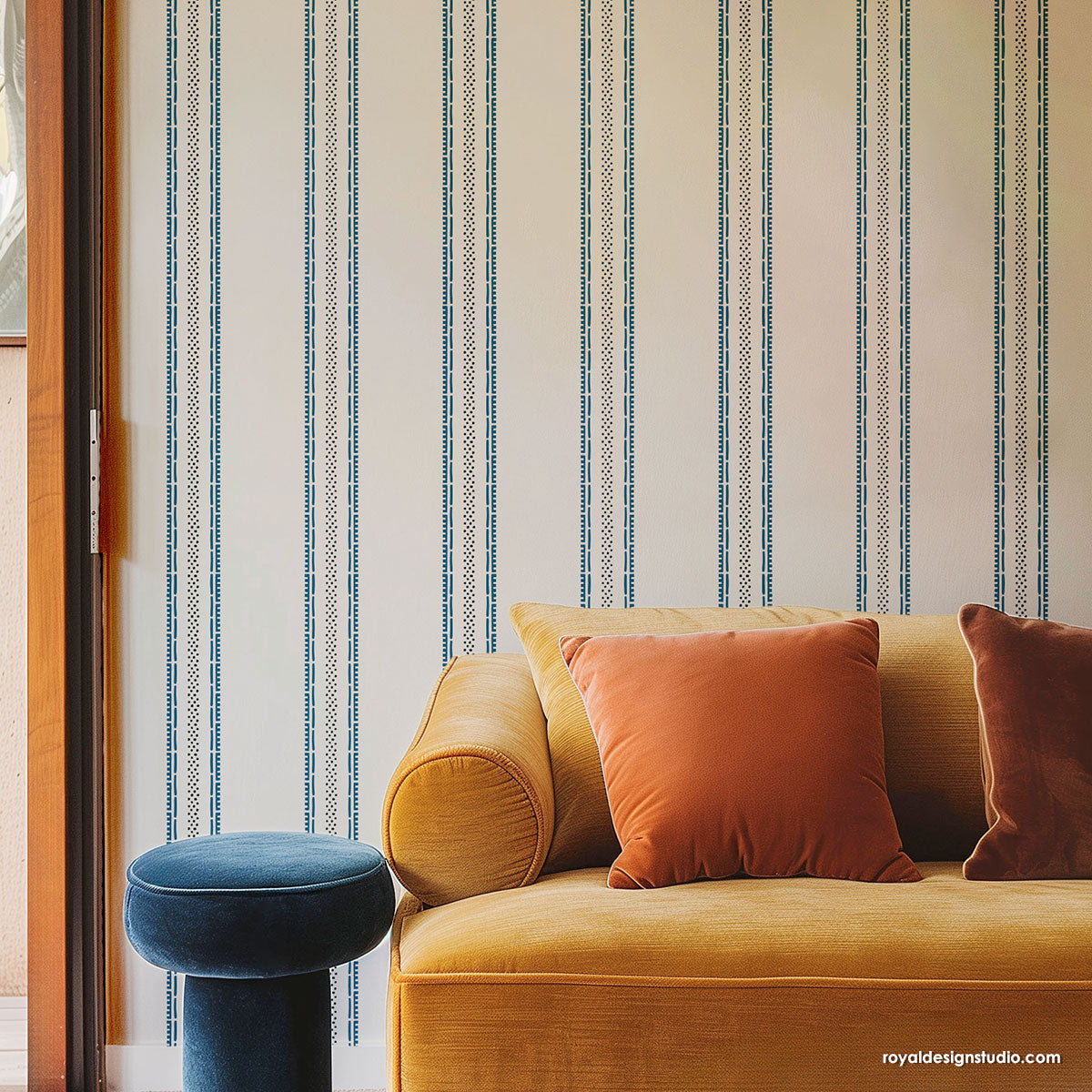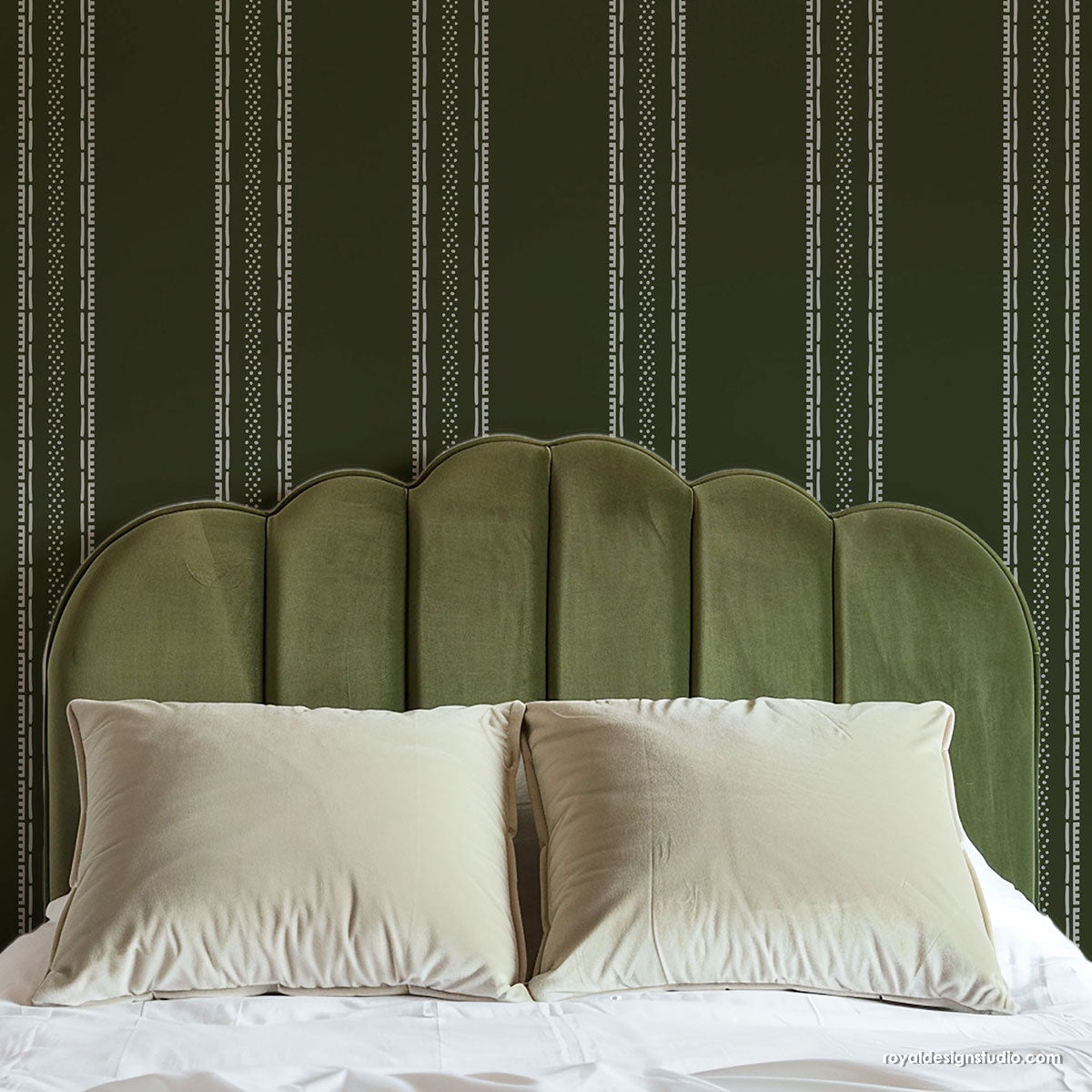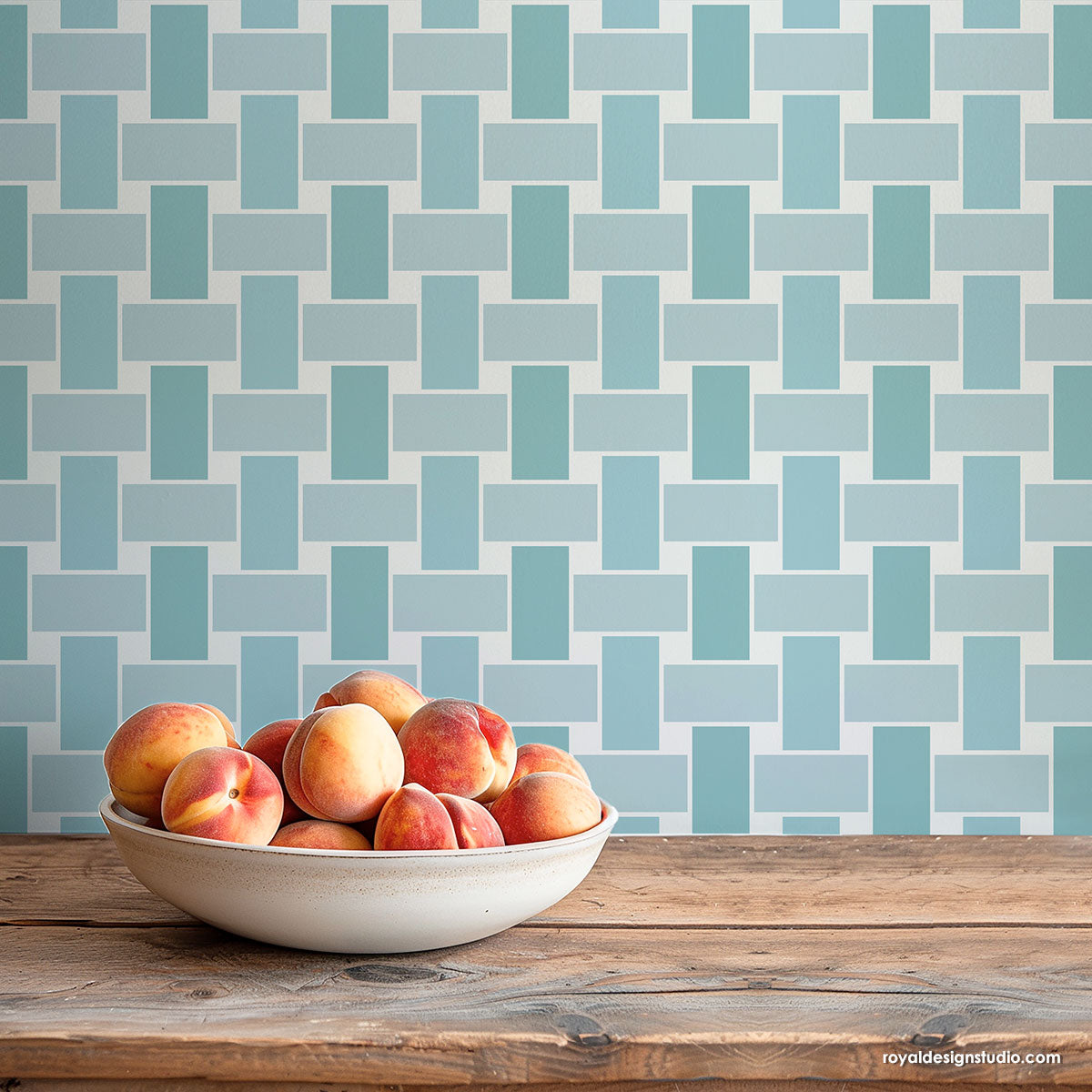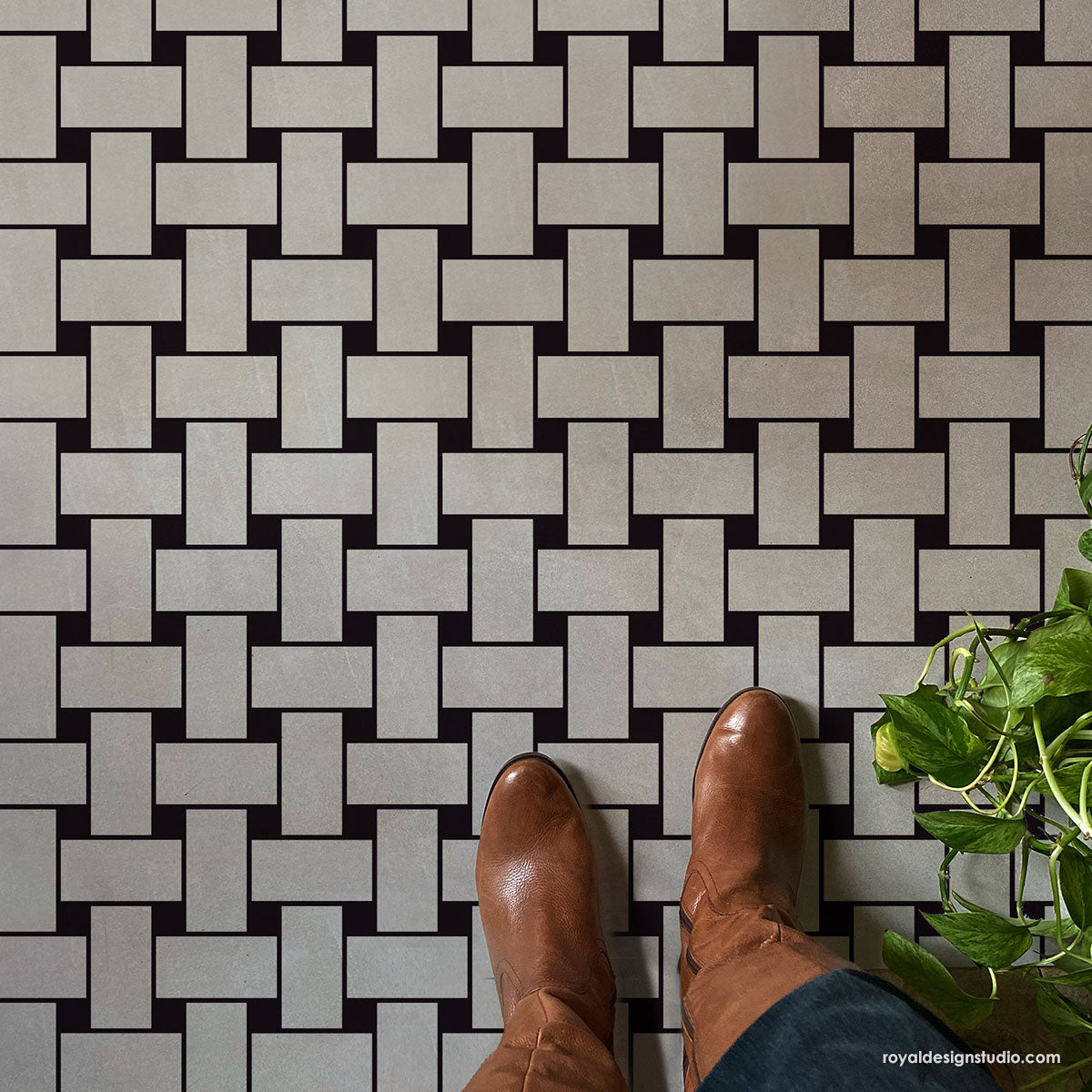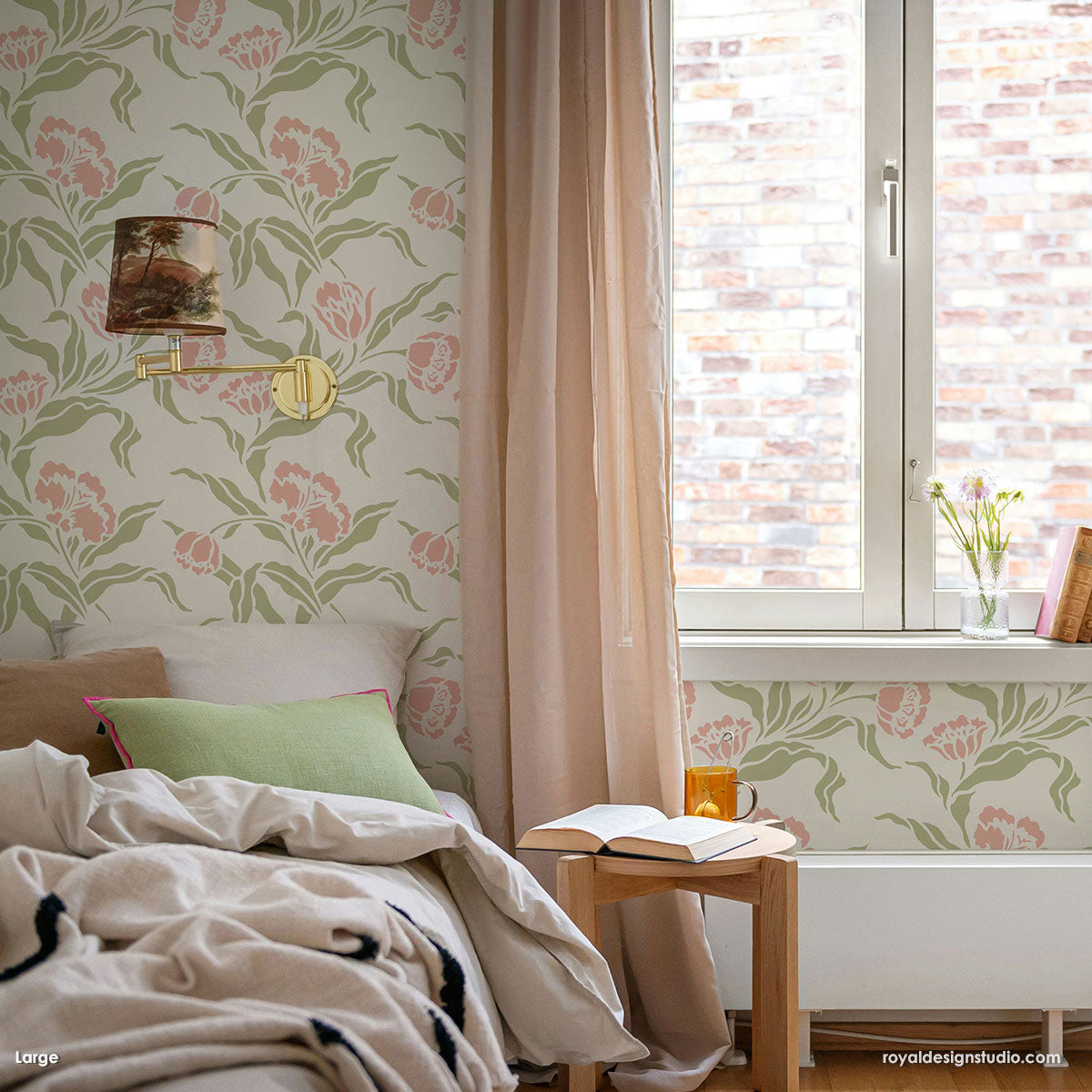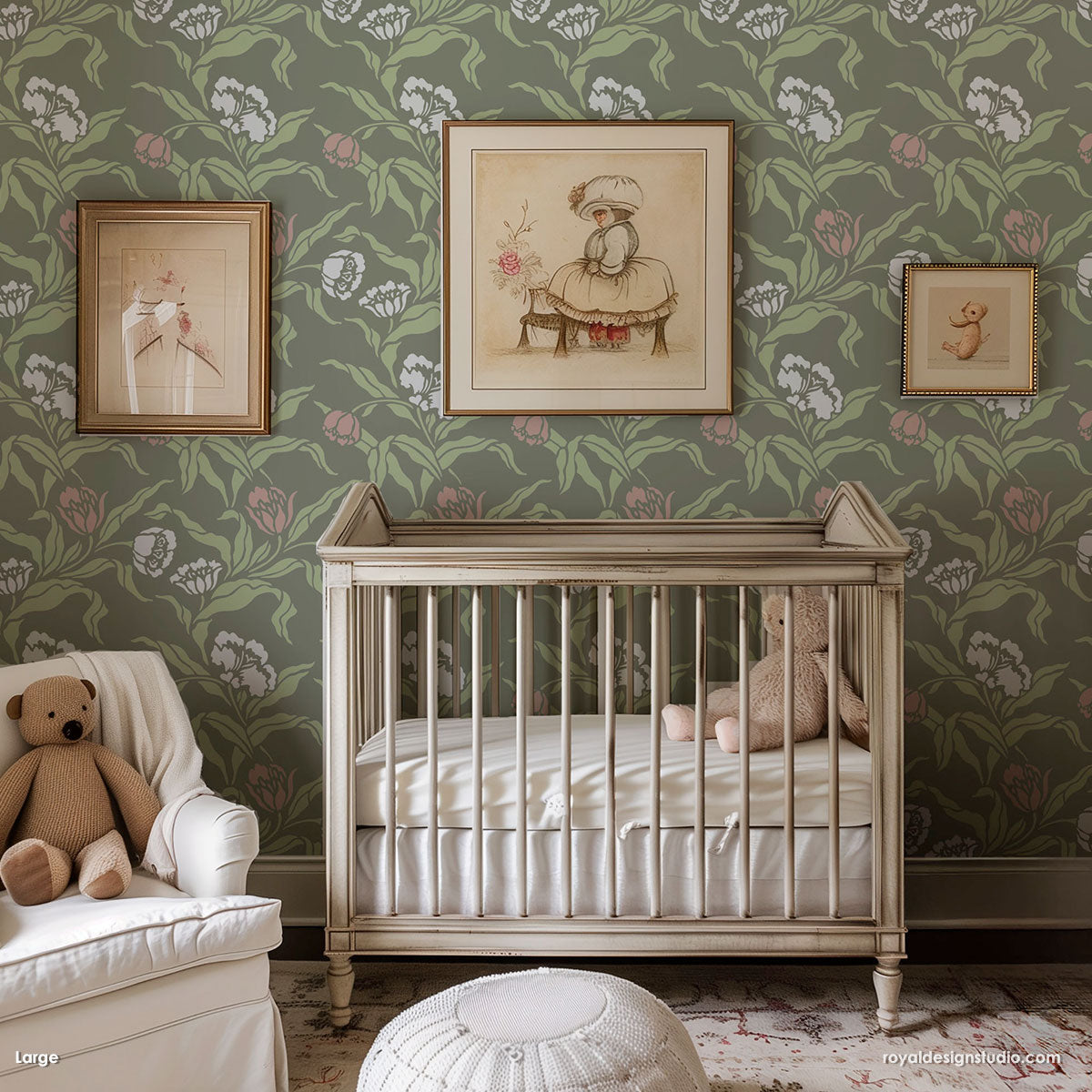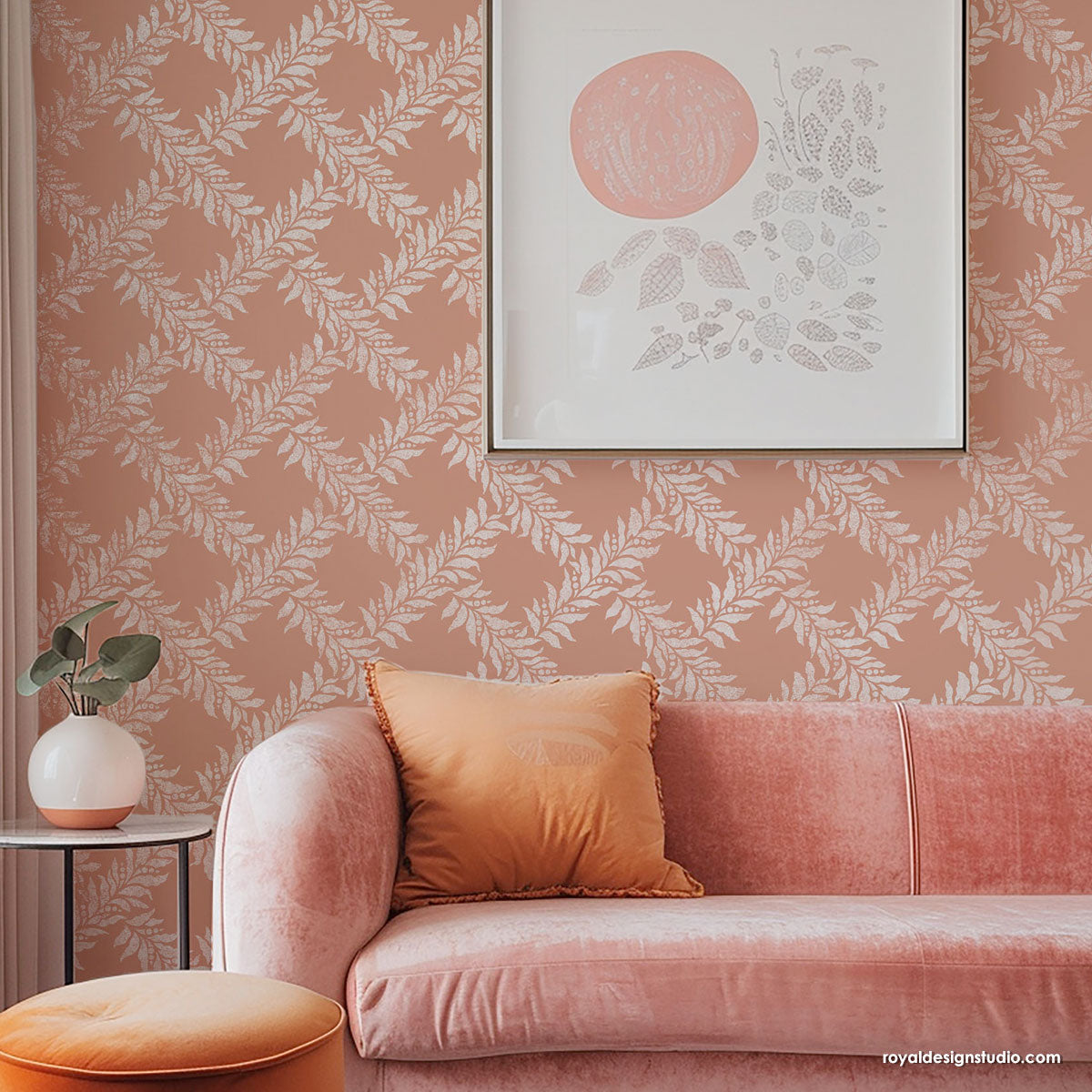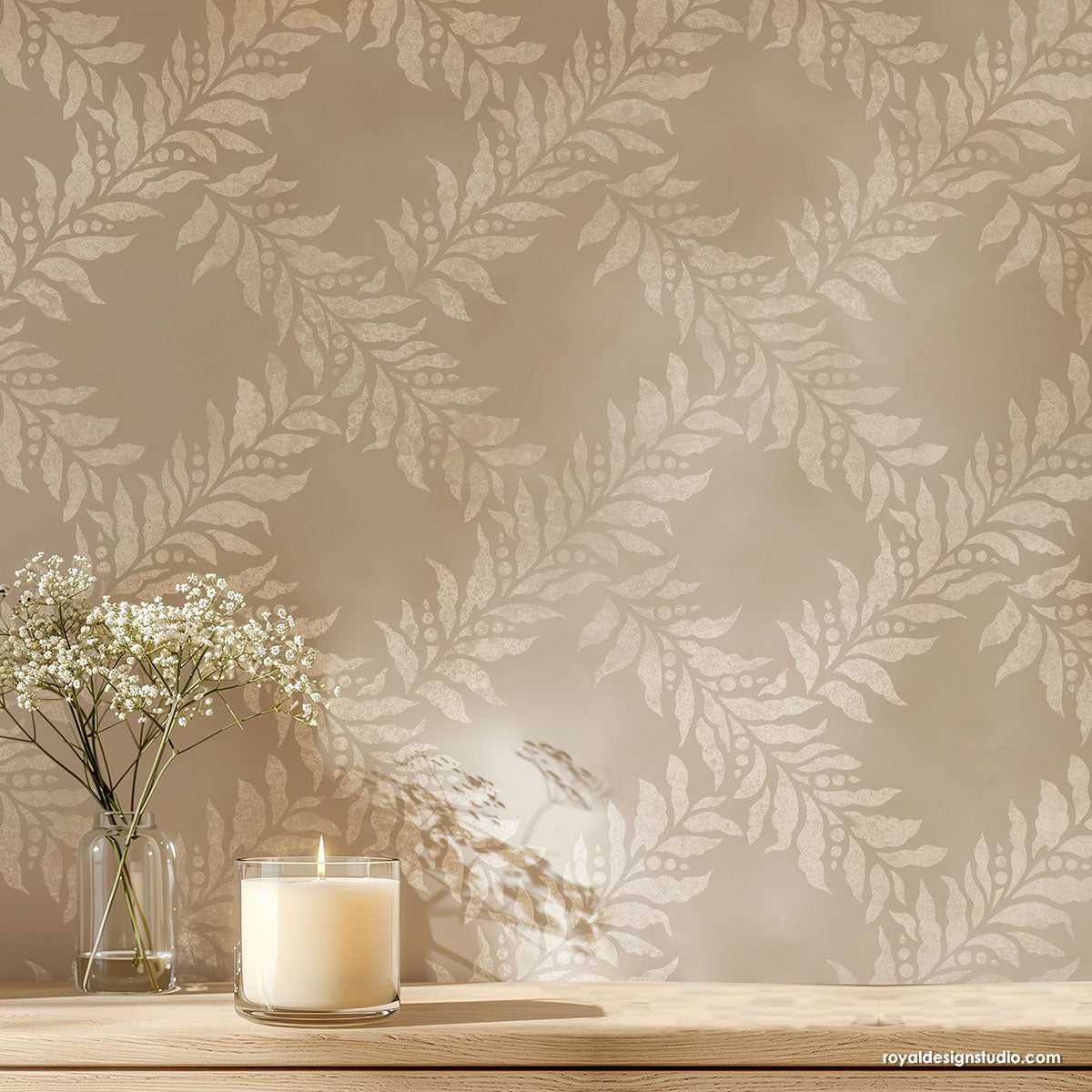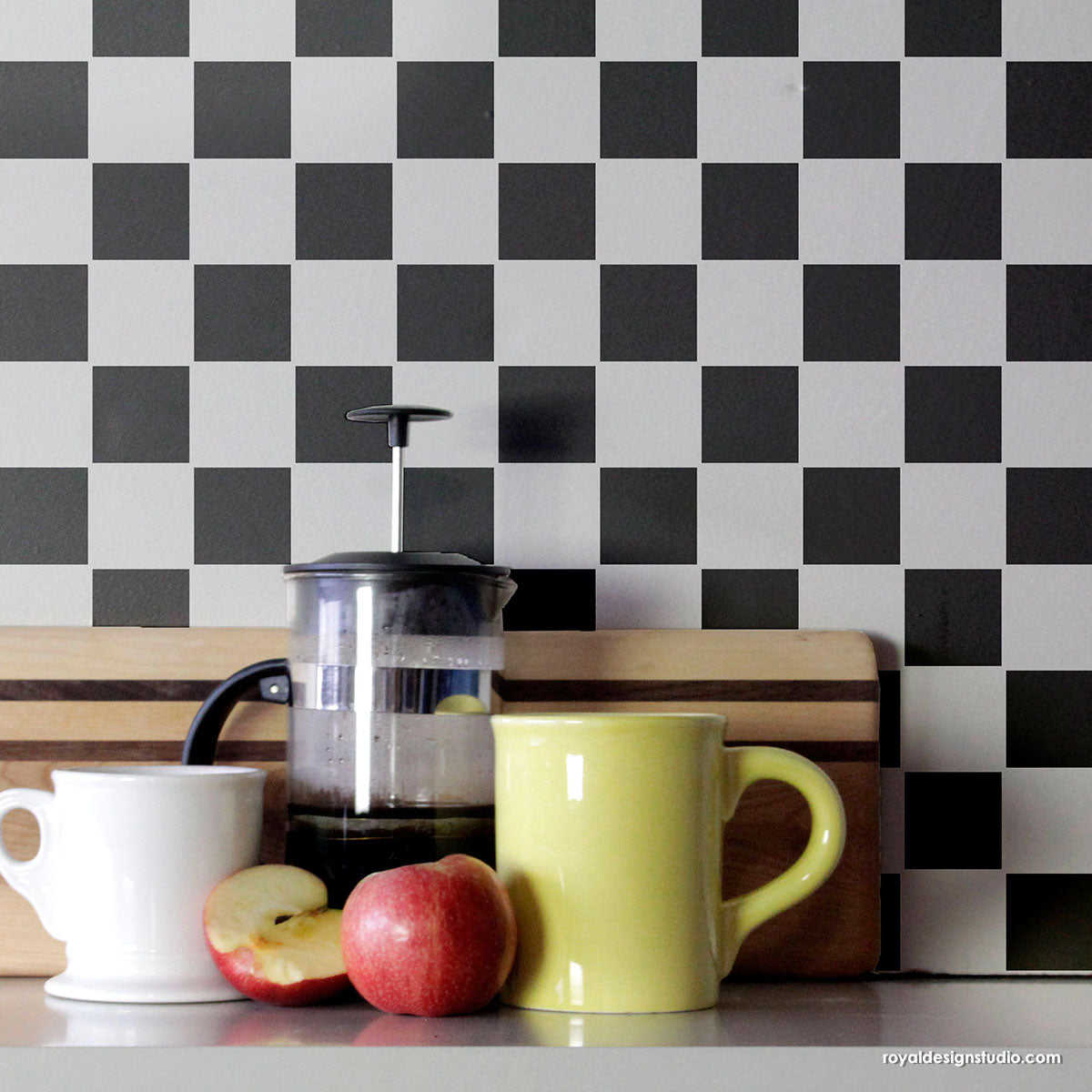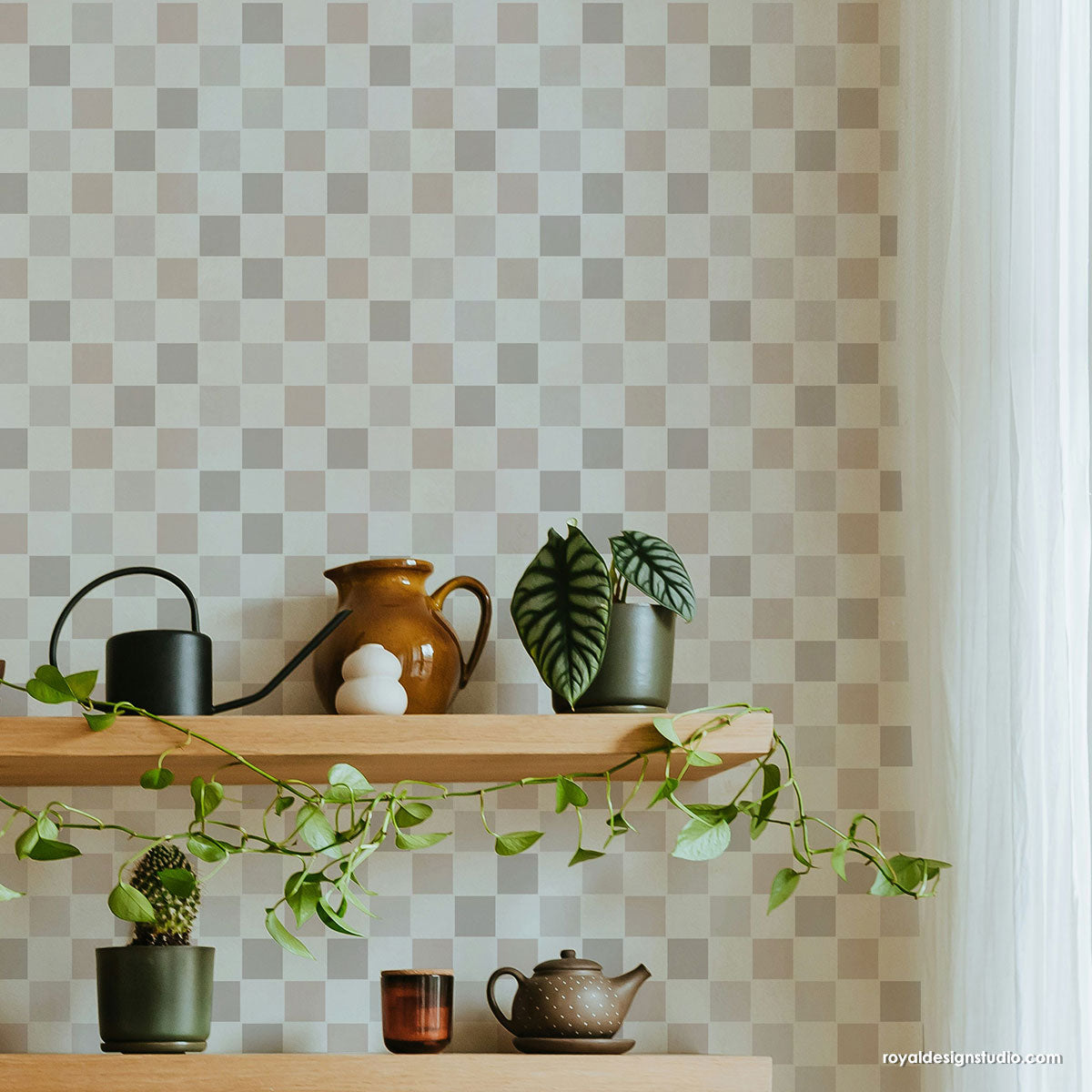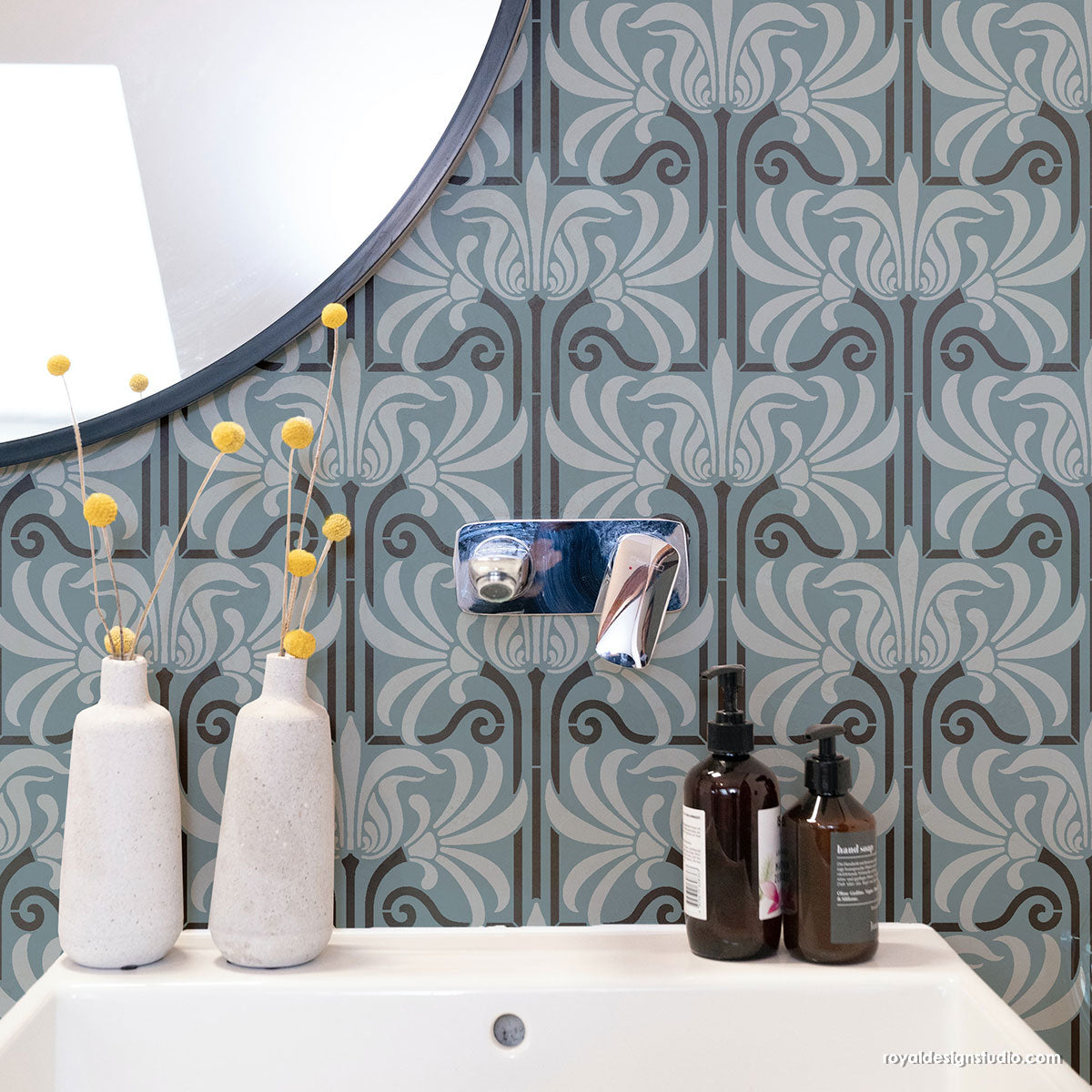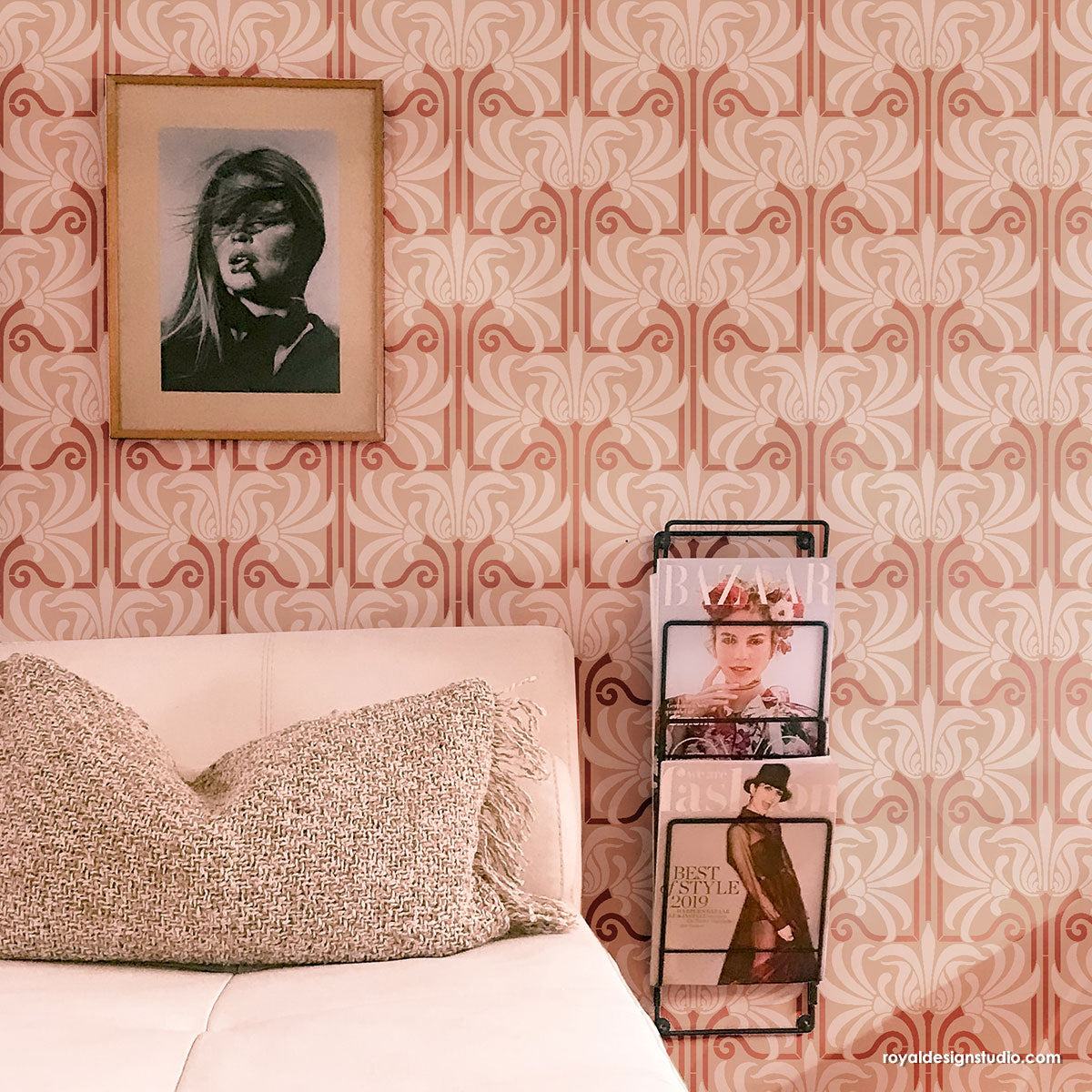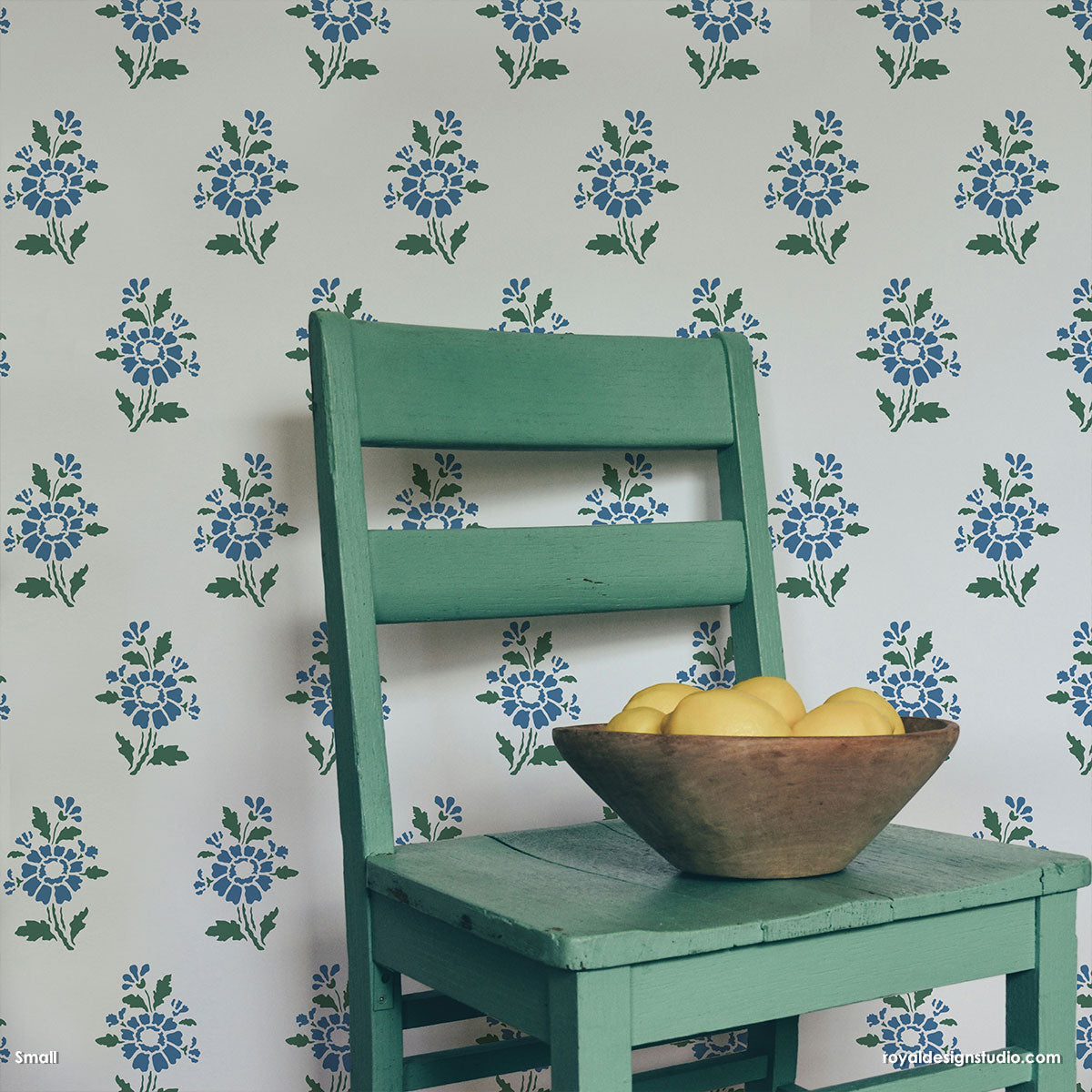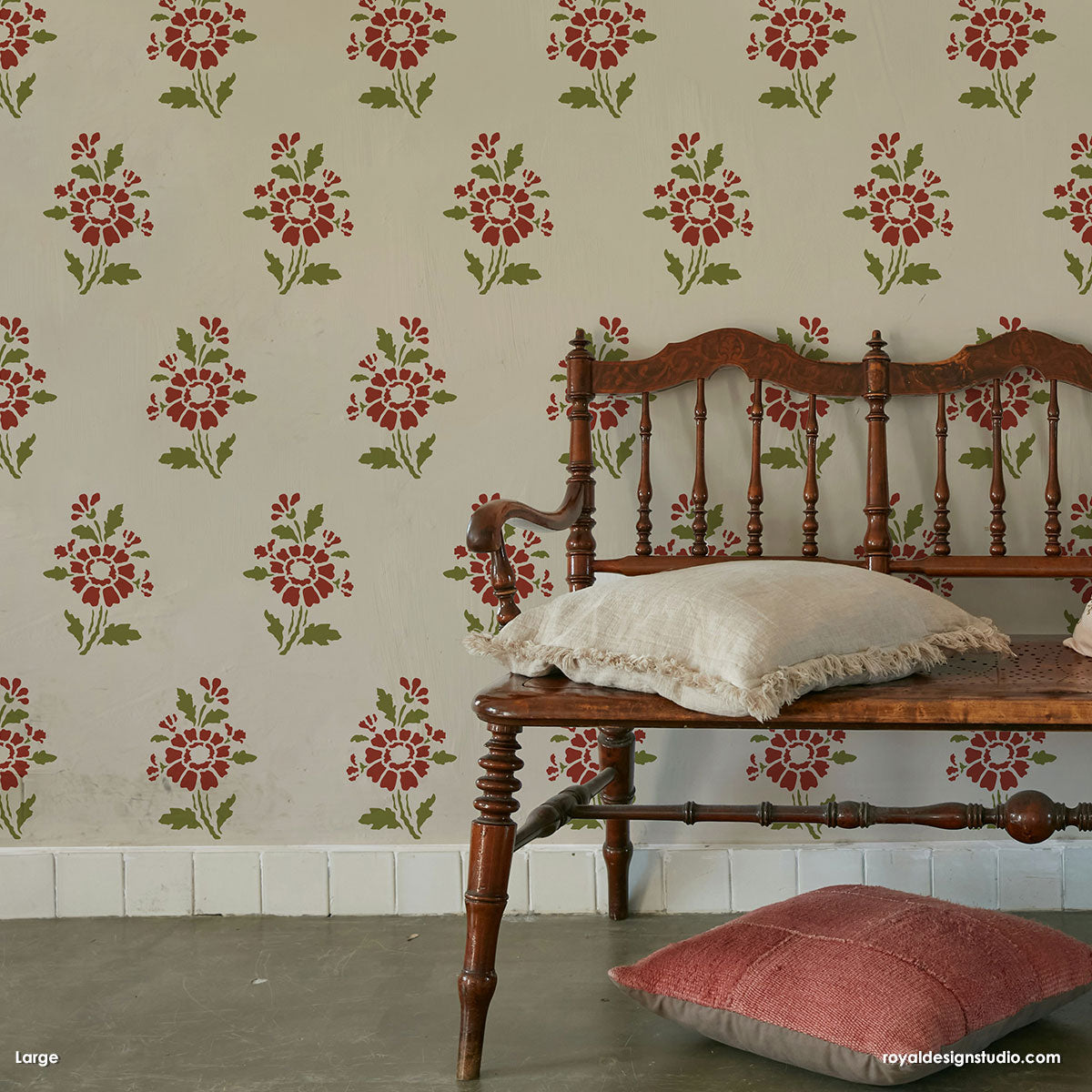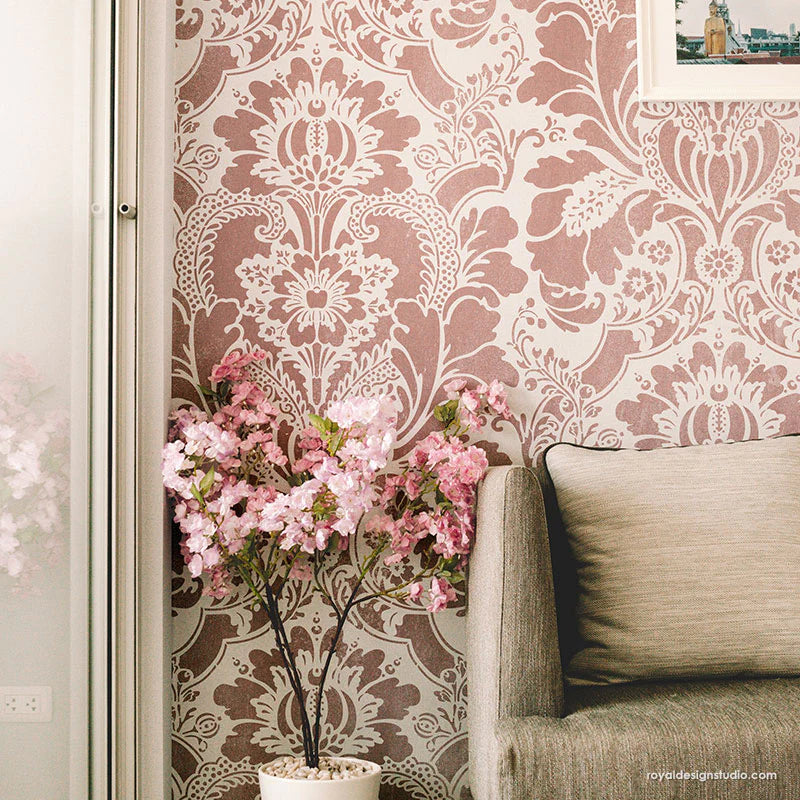The biggest home decorating secret is out! This is what EVERYONE has been asking about (and raving about!)... In order to avoid the hassle of ripping out existing floor and the high cost of real tiles, you CAN achieve a similar look by painting your tile floors that only LOOK expensive. Get in with the inside scoop and check out how YOU can create paint directly over your tile floor to make it look pretty and patterned. Watch the video and follow the instructions below to learn how you can create your own faux aged blue glazed tiled floor in 10 easy steps using Tile Stencils:
Supplies:
- Renaissance Tile Stencil Set A and Renaissance Tile Stencil Set B (size Large 12” x 12”)
- 2” Royal Stencil Brush, 1/2” Royal Stencil Brush, and 3/8” Royal Stencil Brush
- Annie Sloan Chalk Paint® in Old White
- Zinsser’s Bulls Eye 1-2-3
- Water-based polyurethane top coat such as Minwax® Satin Polycyclic Protective Finish
- Folk Art Midnight Blue and French Blue Acrylic Paints
- Folk Art Paint Extender
- TSP Substitute and scrubbing pad
- Small painting brush, ¼” nap roller, foam roller, and trays
- Paper towels, contractors paper, and painter’s tape
Step 1: Time to prep your surface! Dilute 1 part TSP substitute with 1 part water. Use a scrubbing pad to clean the tile floor with this mixture. Then remove any residue of the cleaning mixture by rinsing the floor with warm water.

Step 2: Prime your tile floor with Zinnsers Bulls Eye 1-2-3 using a foam roller and the grout lines using a paint brush. After applying the primer over the entire tile floor, allow it to dry for about 2 hours. Then apply a second coat. Allow to dry.
Step 3: Apply 2 coats of Chalk Paint® over the entire tile floor using a foam roller and paint brush. Allow each coat to dry.
Step 4: Create 2 mixes. Mix the French Blue acrylic paint with paint extender and then mix the Midnight Blue acrylic paint with paint extender.
Step 5: Place and secure one of the Renaissance Tile Stencils onto one of your floor tiles with painter’s tape. Load a 2” stencil brush with the French Blue acrylic paint mix and offload the excess paint onto a paper towel.
Step 6: Use varying pressure to paint the tile stencil design. This will achieve a distressed and glazed tile look.
Step 7: Load the 3/8” and 1/2” stencil brushes with the Midnight Blue acrylic paint mix and offload the excess paint onto a paper towel. Use these smaller stencil brushes for better control when painting the smaller stencil design elements.
Step 8: Place and secure a different Renaissance Tile Stencil over the next floor tile. Repeat Steps 5 through 7. Use different tile stencils for each floor tile. Whether you use a random or preset order… the choice is yours! Repeat this step until the entire tile floor is stenciled.
Step 9: To finish stenciling the areas near a wall, make sure to protect and mask off the wall or baseboard with painter’s tape. Place and secure your tile stencil on the center of the tile near the wall with painter’s tape. Use your free hand to push the stencil into the corner between the floor and the wall. You may use a small paint brush and Old White Chalk Paint® to touch up any areas.
Step 10: It’s time to seal your beautiful blue tile floor! Seal the entire floor with water-based polyurethane top coat. Apply the 1st coat with a nap roller and allow to dry for a couple of hours. Apply a 2nd coat and allow to dry overnight.
Are you ready to tackle some old tile floors in YOUR home? Let us know in the comments! Looking for more Stencil Techniques like this? Check out these other stencil tutorials and videos:

